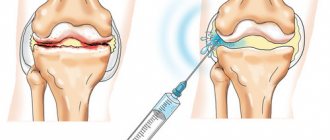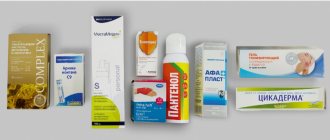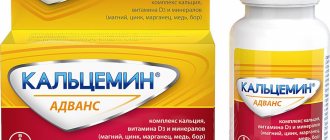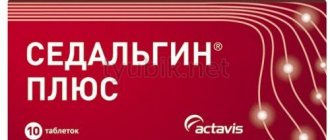Our clinic specializes in rheumatology, neurology and immunology. Read more about some medications used to treat joints.
- Non-steroidal anti-inflammatory drugs (NSAIDs, NSAIDs);
- Steroid hormonal anti-inflammatory drugs / glucocorticosteroids / GCS;
- Immunoglobulins for intravenous (IVIG) and intramuscular administration in rheumatology. IVIG for systemic lupus erythematosus, ankylosing spondylitis, rheumatoid arthritis, etc.;
- Chondroprotectors and intra-articular fluid substitutes;
- Basic therapy. Delagil, Sulfasalazine, Plaquenil, Azathioprine, Methotrexate, Cyclophosphamide, Remicade, Infliximab, Humira and others;
- Immunomodulators;
- Medicines for the treatment of osteoporosis: bisphosphonates, calcium and vitamin D3;
Nonsteroidal anti-inflammatory drugs (NSAIDs, NSAIDs)
Nonsteroidal anti-inflammatory drugs (NSAIDs, NSAIDs) reduce the body's inflammatory response, so they are good as a symptomatic remedy. NSAIDs help relieve pain, significantly reduce swelling and reduce fever, if any. For the complete treatment of autoimmune diseases, we mainly use a suitable version of basic therapy, immunoglobulins, and immunomodulators.
In case of poor tolerance, non-steroidal anti-inflammatory drugs should be replaced with drugs from other groups. Based on the situation, we usually select a combination of anti-inflammatory and analgesic drugs.
If necessary, your attending physician will select a drug depending on the desired effect and the predominant symptom: swelling, pain, etc.
In our practice, the following non-steroidal anti-inflammatory drugs are most often used: Aspirin, Diclofenac, Voltaren, Ortofen, Ibuprofen, Nurofen, Indomethacin, Nimesil, Nise, Airtal, Movalis, Paracetamol, Ketoprofen, Ketonal, Celebrex, Xefocam.
NSAID medications can be used in the form of tablets, ointments, injections or suppositories
In response to the influence of any damaging factor (infection, injury, burn, autoimmune aggression, etc.), the body responds with a protective reaction, i.e. inflammation. In the damaged area of the body, special substances are synthesized - prostaglandins, which create conditions for combating damage:
- blood flow increases,
- the temperature rises,
- The nervous system is notified of what is happening through pain receptors.
Nonsteroidal anti-inflammatory drugs have three main effects:
- anti-inflammatory
- painkillers
- antipyretic
We try to use selective NSAIDs that block predominantly COX2 (COX1 and COX2 are enzymes involved in the development of inflammation). It is much safer for the gastrointestinal tract. If necessary, nonsteroidal anti-inflammatory drugs can be taken under the guise of an antiulcer drug.
NSAIDs should be taken with food, and at such intervals so that the drug does not accumulate in excessive concentrations.
When we see patients “hooked” on NSAIDs, there is usually insufficient attention to the cause and mechanisms of the disease.
- In the case of autoimmune diseases (rheumatism, rheumatoid arthritis, ankylosing spondylitis, systemic lupus erythematosus, psoriatic arthritis, reactive arthritis, vasculitis, etc.), this is usually a refusal of immunomodulatory treatment, basic therapy and infection control, a hyperactive state of the nervous system.
- For osteochondrosis, arthrosis, osteoarthrosis – insufficient attention to physiotherapy and rehabilitation, incorrectly selected gymnastics, refusal of treatment with chondroprotectors.
- With a herniated disc, there is continued pressure from the herniation on the spinal cord or nerve.
- With gout, there is insufficient removal of uric acid from the body.
In such cases, we perform blood and urine tests, looking for more subtle and safer ways to influence the course of the disease . Even when the disease has genetic roots, in most cases this is successful.
Types of drugs
This group of hormones can be divided into groups according to the rate of excretion from the body:
- from 8 to 12 hours, short-acting: hydrocortisone, cortisone;
- from 18 to 36 hours, average duration: prednisolone, methylprednisolone, triamcinolone;
- from 36 to 54 hours, long-acting: dexamethasone, betamethasone.
Hormones also differ in the severity of glucocorticoid and mineralcorticoid properties and in the strength of their effect on the hypothalamic-pituitary-adrenal regulatory system.
Steroid hormonal anti-inflammatory drugs / glucocorticosteroids / GCS
Typical and frequently used representatives of this group of drugs: prednisolone and methylprednisolone (Solu-Medrol, Metipred, etc.), hydrocortisone, Kenalog, Diprospan, Dexamethasone. There are glucocorticosteroids for administration intravenously, intramuscularly, intraarticularly, orally, externally, in suppositories (suppositories).
The action of GCS and the principle of their operation
Steroid drugs (glucocorticosteroids, GCS) are the most powerful, hormonal, anti-inflammatory drugs. GCS have the following main effects:
- anti-inflammatory
- immunosuppressive (immunosuppressive)
- antiallergic
- anti-shock
What is inflammation? In response to the influence of any damaging factor (infection, injury, burn, introduction of a foreign protein, etc.), the body responds with a protective reaction, i.e. inflammation. In the damaged area of the body, special substances are synthesized - inflammatory mediators , which create conditions to combat the damage: blood flow increases, temperature rises, the nervous system is notified of what is happening through pain receptors. The immune system is activated, immune signaling proteins (cytokines), antibodies and white blood cells at the site of inflammation become more aggressive . Hence the characteristic symptoms of inflammation: pain, swelling and swelling, increased local and general temperature, redness.
GCS suppress the body's inflammatory response, blocking the synthesis of inflammatory mediators in the body and suppressing the aggressiveness of the immune system. Symptoms of inflammation quickly decrease, but the cause of the disease remains. If the symptoms of the disease are so destructive that hormonal anti-inflammatory treatment is required, we carry out research in search of more subtle and safe ways to influence the course of the disease . Even when the disease has genetic roots, in most cases this is successful.
Possible side effects. Security measures. Diet
Most often we encounter:
- Peptic ulcer of the duodenum or stomach
- Exacerbation of infections due to decreased immunity
- Increased blood pressure
- Increased glucose (sugar) in the blood
- Osteoporosis
Metabolic disorders with increased body weight are quite rare; In recent years, GCS preparations have become safer, and medicine has learned to use them delicately.
We will do everything possible to stop you from taking hormonal anti-inflammatory drugs. If taking GCS is a necessary measure, we will offer you a safe regimen and diet that prevents weight gain.
How to reduce the risk of side effects? First of all, this is the choice of drug . For example, methylprednisolone, which has greater therapeutic and fewer side effects compared to prednisolone, has recently become widespread. If necessary, anti-inflammatory drugs can be taken under the guise of an anti-ulcer drug . Long-term use should also include prevention of osteoporosis .
Secondly, the correct reception mode . Your doctor will tell you how to use the medicine correctly throughout the day. For long-term treatment, periodic dose changes and breaks are practiced.
Thirdly, you cannot rely only on the GCS. We must understand that this is a symptomatic treatment. We will look for and treat the causes and primary mechanisms of the disease.
Fourthly, you should remember about proper nutrition , and your weight will remain under control.
How to refuse GCS?
If you cannot refuse corticosteroids due to an increase in the symptoms of the disease, most likely, insufficient attention is paid to non-hormonal basic therapy .
Regularity of immunomodulatory treatment and infection control is also important. It is often possible to discontinue GCS after correcting the state of the immune system and treating chronic infections . Nervous stress, sleep disturbances, nervous exhaustion are also possible causes of your difficulties. To cancel long-term use of corticosteroids, a course of antidepressant treatment is sometimes sufficient.
Application
Glucocorticosteroids are used by doctors only if necessary.
These drugs are used in anesthesiology and resuscitation practice. Intravenous administration of corticosteroids during anesthesia maintains hemodynamic parameters. In severe circulatory disorders, drugs help increase tissue perfusion and venous outflow, normalize peripheral resistance and cardiac output, and stabilize cellular and lysosomal membranes.
In severe allergic reactions, intravenous administration of adequate doses of GCS has a therapeutic effect, but the onset of action of GCS is delayed. Thus, the main effects of hydrocortisone develop only 2-8 hours after its administration.
Glucocorticosteroids have a pronounced effect in adrenal insufficiency that develops before and during surgery. Hydrocortisone, cortisone and prednisolone are used for replacement therapy.
The administration of long-acting corticosteroids is practiced to prevent respiratory distress syndrome in premature infants, which reduces the risk of complications and death by 40-50%.
Forms of drugs
Various forms of hormonal drugs are available. This is done not only for ease of use, but also allows you to get the desired effect. Tablet forms are used to treat systemic diseases and allergies.
Inhalation forms are used in the treatment of diseases of the respiratory system (Symbicort, Pulmicort, Seretide). Because their use is usually long-term, they are formulated to have minimal systemic effects.
For the treatment of autoimmune inflammatory diseases of the joints, drugs are produced for intra-articular administration (Diprospan, Kenolog). They are released slowly and the effect of 1 injection on a joint can be quite long.
Ointments (Sinaflan), gels are used in dermatology to treat skin diseases and allergies.
Undesirable effects
Undesirable effects are related to the duration of treatment and dose. More often with prolonged use of more than 2 weeks and high doses. However, high doses of hormones for 1-5 days usually do not cause the development of adverse events. Replacement therapy is considered safe, since very low doses of GCS are used.
Undesirable effects:
1. At the initial stages of admission:
- poor sleep;
- emotional excitability;
- excess appetite, weight gain.
2. When taking GCS and other drugs or diseases in combination:
- hypertonic disease;
- increased sugar levels and risk of diabetes;
- ulcers of the digestive system;
- acne.
3. Possible when used for a long time with large doses:
- Cushingoid;
- suppression of the adrenal glands;
- weakening of protection against infectious diseases;
- osteonecrosis;
- myopathy;
- poor healing from injuries.
4. Late and gradually developing (associated with accumulation):
- osteoporosis;
- cataract;
- atherosclerosis;
- growth retardation in children;
- fatty liver degeneration.
Abrupt cessation of short-term (within 7-10 days) GCS therapy is not accompanied by the development of acute adrenal insufficiency, although some suppression of cortisol synthesis still occurs. Longer therapy with GCS (longer than 10-14 days) requires gradual withdrawal of drugs.
Taking synthetic drugs with a long duration of action causes undesirable effects. Abruptly stopping hormones can lead to acute adrenal insufficiency. Restoring adrenal function can take from several months to a year and a half.
Contraindications
Glucocorticosteroids should not be used without a doctor's recommendation.
There are no absolute contraindications if the benefit is greater than the risk. Especially in emergency situations and short-term use. For long-term treatment, relative contraindications may be:
- decompensated diabetes mellitus;
- symptoms of mental illness;
- exacerbation of peptic ulcer of the stomach and duodenum;
- severe osteoporosis;
- severe hypertension;
- severe heart failure;
- active form of tuberculosis;
- systemic mycoses and fungal skin infections;
- acute viral infections;
- severe bacterial diseases;
- primary glaucoma;
- pregnancy.
Today we cannot do without glucocorticosteroids in medicine. Since their effects are very diverse, the doctor must choose the drug that is suitable specifically for your case.
Chondroprotectors and intra-articular fluid substitutes
Artra, Dona, Structum, Teraflex, Chondroitin, Glucosamine, Adgelon, Piaskledin, Alflutop, Hyaluronic acid, Sinvisc, Ostenil, Noltrex, Sinocrom, Fermathron
Chondroprotectors are medications that heal joints. We use them if the nutrition of the joint is impaired (arthrosis, osteochondrosis, metabolic disorders), or the joint has been damaged by inflammation or injury. We begin full treatment with chondroprotectors after the inflammation has subsided.
Treatment with chondroprotectors for oral administration should be long-term : the effect usually begins after 3 months, and a stable effect - after at least 6 months. These medications are specifically designed for long-term use and are usually well tolerated.
Chondroprotectors for injection into a joint or intramuscularly have a faster effect, sometimes noticeable after 1 injection. In total, we perform from 1 to 5 intra-articular or 10-20 intramuscular injections per course, followed by a transition to taking drugs orally.
Injections create a high concentration of medication directly into the affected joint
Chondroprotectors help work and medications that improve blood circulation and metabolism .
Chondroprotectors for oral administration. Commonly used medications.
Piascledine is a herbal preparation that regulates metabolism in cartilage tissue. Contains unsaponifiable compounds from avocado and soybean oils. The drug helps slow down the development of the degenerative process in cartilage tissue, relieves pain (associated with this process) and restores the patient’s motor function. Stimulates the synthesis of proteoglycans and collagen. Promotes the restoration of cartilage tissue. Reduces collagenase production.
Chondroitin and/or Glucosamine are contained in the preparations Artra, Dona, Structum, Teraflex.
Chondroitin , a drug that affects phosphorus-calcium metabolism in cartilage tissue , is a high molecular weight mucopolysaccharide. Slows down the destruction of bone tissue and reduces calcium loss, accelerates the process of bone tissue restoration, and inhibits the process of degeneration of cartilage tissue. Prevents compression of connective tissue and plays the role of a kind of lubricant of articular surfaces. When used externally, it slows down the progression of osteoarthritis. Normalizes metabolism in hyaline tissue. Stimulates the regeneration of articular cartilage.
Glucosamine is a drug that affects metabolism in cartilage tissue. Replenishes the natural deficiency of glucosamine, stimulates the synthesis of proteoglycans and hyaluronic acid in synovial fluid; increases the permeability of the joint capsule, restores enzymatic processes in the cells of the synovial membrane and articular cartilage. Promotes fixation of sulfur during the synthesis of chondroitinsulfuric acid, facilitates normal calcium deposition in bone tissue, inhibits the development of degenerative processes in joints, restores their function and reduces pain. With a single oral administration of an average therapeutic dose, the maximum concentration in plasma is achieved after 3-4 hours, in the synovial fluid - after 4-5 hours.
Injectable drugs and intra-articular fluid substitutes. Frequently used drugs.
Adgelon is a drug that stimulates the process of regeneration of cartilage tissue. The active substance of the drug is a glycoprotein isolated from cattle blood serum. The drug promotes the rapid accumulation of mass of young cartilage cells and their differentiation, which leads to more rapid formation of replacement cartilage tissue, restoration of a smooth articular surface in the area of damage and improved joint mobility. When using the drug, the damaged area is filled with young cartilage cells. With intra-articular injections , the basic substance produced by the cells of cartilage tissue has a more ordered structure: it becomes as dense as in normally functioning cartilage tissue.
Alflutop is an injection drug of natural origin. This is a bioactive concentrate from small sea fish Sprat (Sprattus sprattussprattus), Black Sea whiting (Odontogadus merlangus euxinus), Black Sea bellyfish (Alosa tanaica nordmanni), Black Sea anchovy (Engraulis encrassicholusponticus). The drug Alflutop regulates metabolism in cartilage tissue, consists of mucopolysaccharides, chondroitin sulfate, amino acids, peptides, sodium ions, potassium, calcium, magnesium, iron, copper and zinc. Alflutop prevents the destruction of macromolecular structures of normal tissues, stimulates restoration processes in interstitial tissue and articular cartilage tissue, which explains its analgesic effect. The anti-inflammatory effect of Alflutop and tissue regeneration are based on inhibition of hyaluronidase activity and normalization of hyaluronic acid biosynthesis. These effects are synergistic and cause activation of tissue restoration processes (in particular, restoration of metabolic processes in cartilage tissue).
100% synthetic polymer Noltrex does not contain substances of animal origin and is not a natural metabolite. Due to the presence of silver ions in the composition of the drug, Noltrex has antibacterial properties. When Noltrex is administered at the first stage, physical separation of the contacting and rubbing surfaces of the joint affected by osteoarthritis occurs as a result of an increase in the viscosity of the synovial fluid. Pain is reduced and joint mobility is improved. At the second stage, due to the unique properties of Noltrex, like a sponge, it absorbs joint fluid and water from the cartilage and subchondral bone, providing decompression of pain endings. At the third stage, biochemical fragments of the joint fluid - enzymes of inflammation and proteolysis - are adsorbed and inactivated on strictly oriented active centers of the polymer. At the same time, silver ions migrate to the surface of the joint, resulting in the suppression of endogenous infection. Noltrex is one of the most easily used means of combating arthrosis today. The entire process of using the drug comes down to a common and very widespread procedure - intra-articular injection, which does not require any additional skills from the doctor.
Substitutes for intra-articular fluid are hyaluronic acid preparations (Synvisc, Ostenil, Sinokrom, Fermatron). The therapeutic effect of Hyaluronic acid is associated with “replenishing the viscosity” of the intra-articular fluid of the affected joint. In addition, the action of sodium hyaluronate is based on the “trigger” effect - it directly restores the ability of the joint to produce hyaluronan and, thus, returns it to a state of biochemical equilibrium, which persists for several months. As accumulated clinical materials show, the following points occur when using sodium hyaluronate:
- restores synovial balance: increases the viscosity of synovial fluid, restoring its lubricating, shock-absorbing and filtering properties;
- protects articular cartilage from mechanical and chemical damage: restores the protective coating on the inner surface of the joint and increases the binding of free radicals;
- inflammation of the synovial membrane decreases and its protective functions are restored.
Slowing down the destruction of articular cartilage in combination with the processes of restoring the biochemical balance of the synovial fluid leads to rapid relief of pain symptoms and regression of the phenomena of limited mobility in the joint.
The beneficial effect of sodium hyaluronate appears gradually during the course and lasts for several months. After completing a full course of 5 injections, symptoms are usually relieved for a period of 6 to 12 months.
Immunomodulators
Immunomodulators are medications to correct the functioning of the immune system. We resort to immunomodulators when it is necessary to increase, decrease or regulate the activity of a particular immune mechanism.
The immune system is our main defender. It saves us from pathogenic microbes, fungi, parasites and cancer cells. For medical purposes, it is customary to consider three parts of the immune system:
- Cellular immunity. It is determined by the presence and activity of different types of white blood cells (leukocytes).
- Humoral (immunoglobulin) immunity. Immunoglobulins are special proteins that can recognize harmful biological and chemical factors that have entered the body.
- Cytokines are special protein molecules that mainly provide communication and coordination between immune cells. The blood test mainly evaluates the content of interferons (a subtype of cytokines); they are especially important for fighting viral infections. In addition, cytokines play an important role in autoimmune inflammation (tumor necrosis factor, IL-6, etc.).
All parts of the immune system work in close relationship with each other.
The selection of immunomodulators is made according to immunological blood tests . Modern immunomodulators make it possible to selectively influence one or another deviation in the functioning of the immune system.
Interferon inducers (Cycloferon, Panavir, Neovir, Kagocel, Amiksin, etc.). They increase the production of interferons. We often use them for chronic viral infections, together with antiviral drugs.
Interferon preparations (Viferon, Human Interferon, Anaferon, etc.). They replace their own interferon and thereby improve the function of the immune system. We use them in cases of significant interferon deficiency.
Regulators of cellular immunity (Galavit, Polyoxidonium, Lykopid, etc.). They stimulate (regulate) the activity and production of white blood cells. The drug Polyoxidonium is approved for use in rheumatic pathology, because does not stimulate autoimmune reactions. The drug Galavit is interesting because it blocks the production of TNF (tumor necrosis factor), which is involved in joint inflammation in autoimmune arthritis.
Thymodepressin is a new promising drug for suppressing the excessive production of aggressive immune cells. One of the safest immunosuppressants. Has proven itself in the treatment of psoriatic arthritis. Promising in the treatment of rheumatoid arthritis, ankylosing spondylitis, and vasculitis.
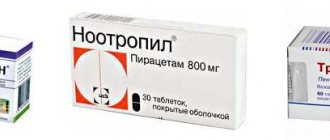

![Rice. 2. Relationship between dose of diclofenac (D), naproxen (Nap) and etoricoxib (Eto) and effect size in osteoarthritis [3]](https://ms-pi.ru/wp-content/uploads/ris-2-zavisimost-mezhdu-dozoj-diklofenaka-d-naproksena-nap-i-330x140.jpg)

